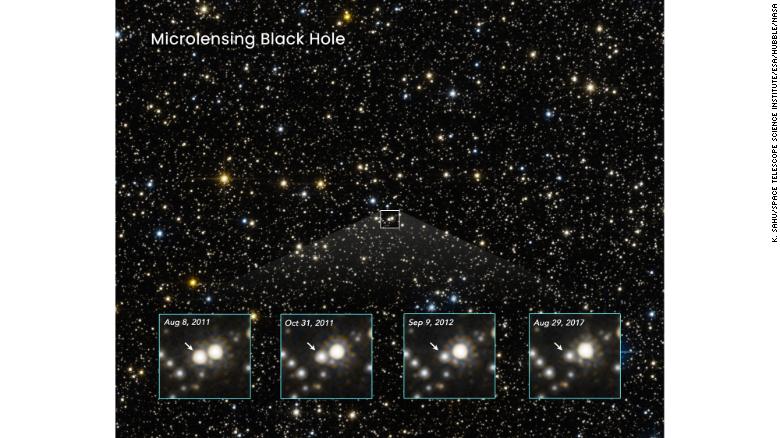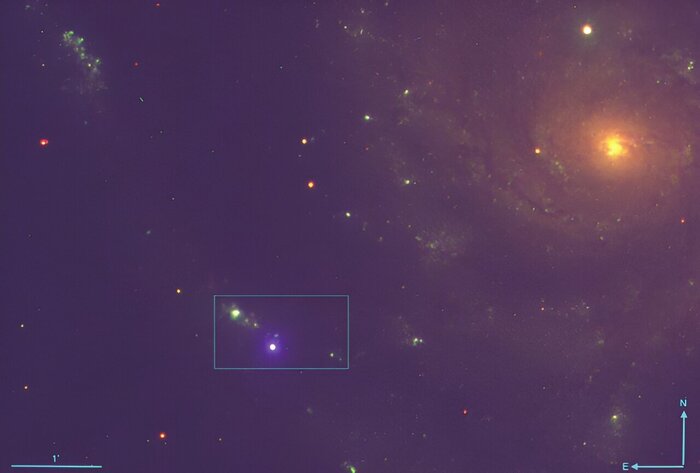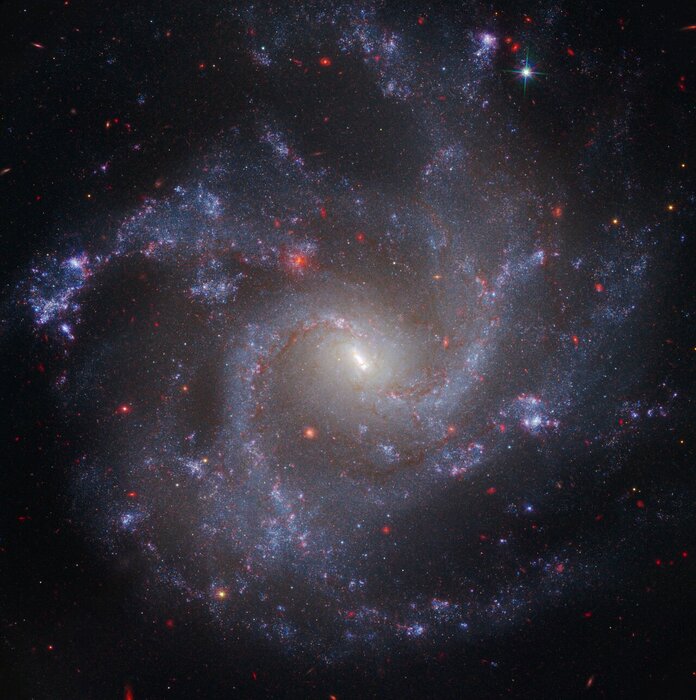This is what the supermassive black hole at the center of the Milky Way looks like 1:03
(CNN) --
For the first time, the Hubble Space Telescope has detected a lone object drifting through our galaxy, the Milky Way -- the unseen, ghostly remains of a once-radiant star.
When stars massive enough to dwarf our sun die, they explode in a supernova and the remaining core is crushed by its own gravity, forming a black hole.
Sometimes the explosion can send the black hole into motion, hurtling through the galaxy from one side to the other.
By rights, there should be many wandering black holes known to scientists, but they are virtually invisible in space and therefore very difficult to discover.
Photograph of the Sagittarius A* black hole confirms the validity of the theory of relativity
Astronomers believe that 100 million floating black holes roam our galaxy.
Now, researchers believe they have detected such an object.
The detection was made after spending six years on observations, and astronomers were even able to make an accurate measurement of the mass of the extreme cosmic object.
The black hole is 5,000 light-years away, located in a spiral arm of the Milky Way called Carina-Sagittarius.
This observation allowed the research team to estimate that the closest isolated black hole relative to Earth might be only 80 light-years away.
advertising
This is an artist's impression of a black hole adrift in the Milky Way.
But if black holes are essentially indistinguishable from the vacuum of space, how was Hubble able to detect it?
The very strong gravitational field of black holes warps the space around them, creating conditions that can deflect and amplify the starlight that lines up behind them.
This phenomenon is known as gravitational lensing.
Ground-based telescopes look at the millions of stars that dot the center of the Milky Way and look for this fleeting glow, which means a large object passed between us and the star.
Hubble is perfectly suited to follow up on these observations.
Two different teams of researchers studied the observations to determine the object's mass.
Both studies have been accepted for publication in the academic journal The Astrophysical Journal.
One of the teams, led by astronomer Kailash Sahu, a Hubble instrument scientist at the Space Telescope Science Institute in Baltimore, determined that the black hole weighed seven times the mass of our sun.
The second team, led by Ph.D. student Casey Lam and Jessica Lu, an associate professor of astronomy, both at the University of California, Berkeley, arrived at a lower mass range, between 1.6 and 4.4 times that of the sun. .
Based on this estimate, the object could be a black hole or a neutron star.
Neutron stars are the incredibly dense remains of stars that have exploded.
"Whatever it is, the object is the first dark stellar remnant discovered wandering the galaxy, unaccompanied by another star," Lam said in a statement.
The star-filled sky shown in this Hubble image is toward the center of the galaxy.
The black hole detected by the Hubble telescope passed in front of a background star located 19,000 light years from Earth towards the center of the galaxy, amplifying its starlight for 270 days.
Astronomers had a hard time determining their measurement because there is another bright star very close to the one they observed shining behind the black hole.
A black hole fueling the birth of a star amazes scientists
"It's like trying to measure the tiny movement of a firefly next to a bright light bulb," Sahu said in a statement.
"We had to meticulously subtract the light from the nearby bright star to accurately measure the deviation from the faint source."
Sahu's team believes the object may be traveling at a speed of 100,000 miles per hour, which is faster than most stars in that part of the galaxy, while Lu and Lam's team came up with an estimate of 108,000 kilometers per hour.
More data and observations from Hubble and more analysis could end the discussion about the identity of the object.
Astronomers continue to search for these unseen oddities, which could help them better understand how stars evolve and die.
"With microlensing, we are able to examine these solitary, compact objects and weigh them. I think we have opened a new window on these dark objects, which cannot be seen in any other way," Lu said.
Black Hole NASA Hubble Space Telescope Milky Way





/cloudfront-eu-central-1.images.arcpublishing.com/prisa/TQ73US57UFGWTIXR7C3BS2OTIA.jpg)

